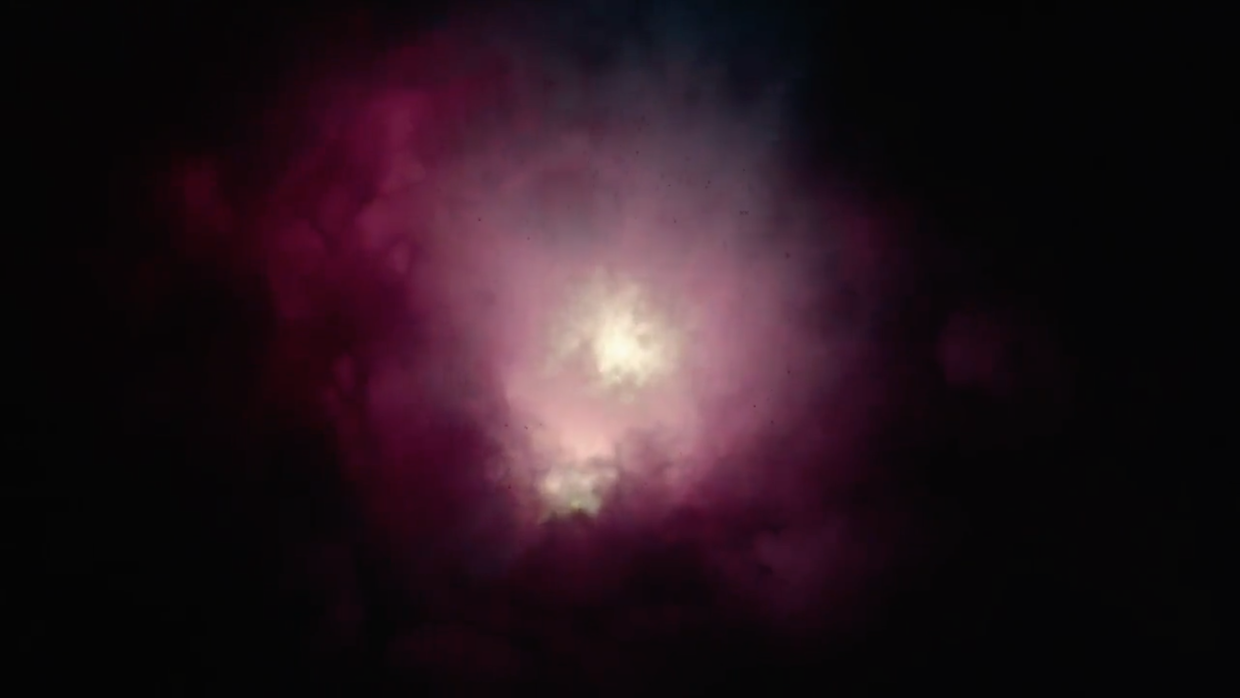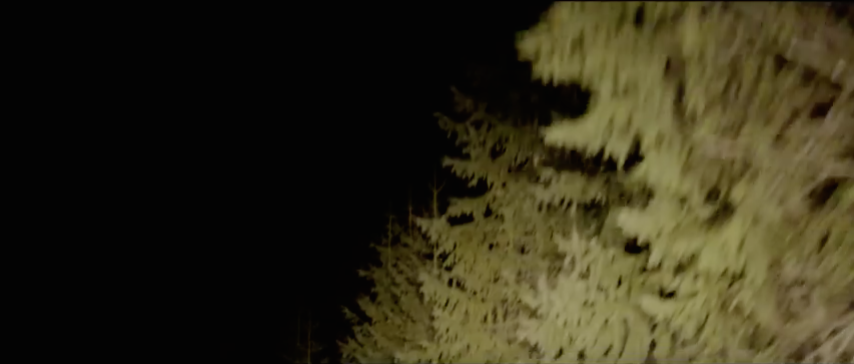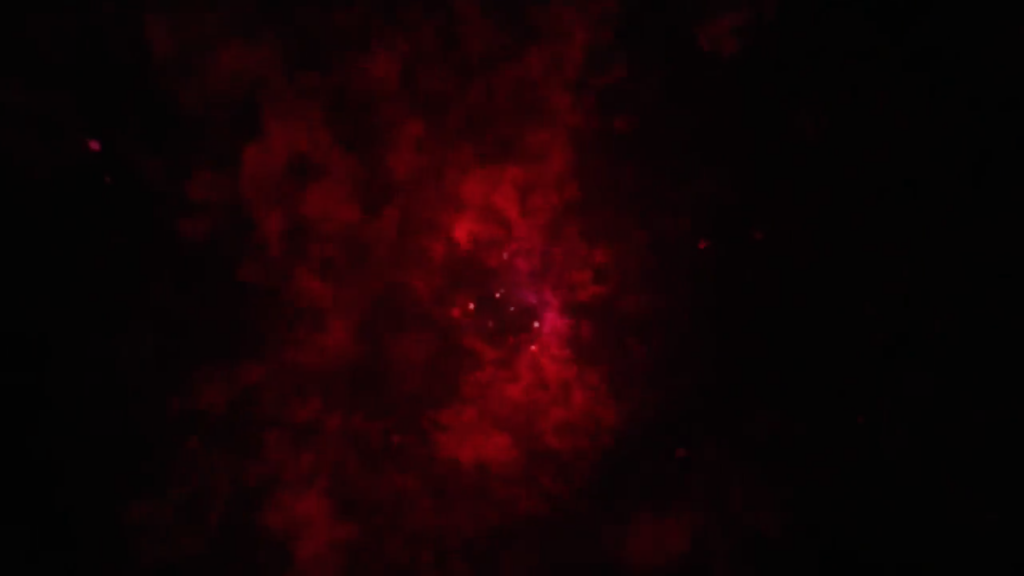 Back to selection
Back to selection
Twin Peaks, Parts 7-8: Re VFX and Almost Nothing More
 Twin Peaks: The Return
Twin Peaks: The Return I’ve got zip (that I want) to say (at this time) about Twin Peaks parts seven and eight in terms of The Bigger Picture, but I do want to delve into episode eight’s widely-presumed anomalous status — that it marked an unprecedented event not just in TV (true, I’m pretty sure) but in larger visual culture. I’ve been pleasantly surprised by how many recappers, while clearly over their heads, are baseline sympathetic to finding themselves routinely unmoored, even if that means repeating over and over that this is closer to “avant-garde art” than normal TV to meet the word count. My feed was busy connecting the dots to Peter Tscherkassky (gas station), Tony Conrad (the giant staring at feedback of what we’ve just seen), Pat O’Neill (bombs away) et al., and this is all apposite — visual and conceptual thinking along possibly inadvertent parallel lines. If recappers can’t find those exact reference points to latch onto, that speaks less to willful ignorance than to how unfortunately severed experimental film is from nearly all mainstream discussions of film because it’s generally hard to see outside of privileged contexts (fests, academia, the secret knowledge of a self-preserving circle working with a very finite set of resources and publicity access to the larger world); resources/capital/access/etc. So I won’t assign demerits for willful incuriosity, even if some recappers are reduced, in some unpleasantly condescending/bluffing cases, to dismissing this as a “student film” — because presumably experimentation is something the seasoned artist gets out of their system in maturity, following the George Lucas Model of graduating from Bruce Conner visuals to Lawrence Kasdan’s screenwriting.
But it won’t do to simply say that Lynch is operating in an experimental lineage, because the money matters; alongside his usual lo-fi jags, you can see it here, the same way you can hear the difference between a 4-track demo and something mixed over 128 channels. VFX on the new Twin Peaks are credited to BUF, which is not a small-time company: upcoming credits include Blade Runner 2049, current credits American Gods and Independence Day: Resurgence. Unless I’m missing something, Lynch first worked with BUF on this 2008 Gucci commercial, which assuredly looks like his work: those glowering helicopter nighttime glides, flickering lights within a weird lobby space et al. BUF worked on Enter the Void, and the shot in part one where the “camera” pans up the side of a building prior to introducing us to the glass box, with its weird mix of real properties and underlying skeletal outline, looks a little like this topography visual for that film, except in Peaks the overhead outlines co-exist uneasily with what’s been layered over them (Noé transitioned from plates to the final fleshed-out version). So it’s not like Lynch couldn’t have had some idea of their toolbox before getting to work with them.
Here are two stills, one from part one of The Return, one from a 2012 Citroen commercial BUF made (please forgive the blurriness of all screengrabs henceforth, I’m working from YouTube grabs):


The basic visual idea behind both shots is not all that different: certain shades of nighttime forest green against intense blacks from which no white can emerge. The differences are a matter of degree and detail, which is a basic definition of artistic intervention: you get way less intense illumination around the area of forest detail being highlighted and greater darkness from Lynch (bottom frame). He’s leaning into a technology and pushing it his way, not inventing a whole new thing.
This becomes even more pertinent when it comes to that big atomic bomb showcase. It doesn’t take a whole lot to pick up on the 2001 connection — speeding through all those flashing lights — but the obvious big difference is mode of production: Trumbull was working analog, sans CG, while the new Twin Peaks is an all-expenses-pre-negotiated chance for Lynch to take computers for an expensive drive. This is not an opportunity he’s had before in his feature work, and it’s one generally denied to experimental artists at this expensive level of realization. BUF also worked on the 2014 Cosmos with Neil deGrasse Tyson, and the images they produced are not all that different, conceptually, from the gaseous matter Lynch goes headfirst into. Let’s make the analogy much crasser:


The first shot is the new Peaks, the second from a Coke Zero commercial; same toolbox, radically different ends. (Lynch’s disembodied “camera” is far shakier and prone to clouding by imaginary film spackle, for obvious starters.) And while I can’t find the apposite Peaks screengrabs to illustrate, think about those eerie glides over the CG ocean and the looming monoliths, plus the color-drained palette of that and New Mexico, then look at this set of images from BUF’s work on the Venus sequence of Cosmos. The starting template can be seen there; again, it’s what Lynch does with specific colors et al. that makes all the difference. I’m saying all this not to belabor the obvious or berate anybody, but to make two points: a) the experimental precedent, while relevant, fails to account for the very expensive tools Lynch has finally had a chance to customize for himself b) CG’s most expensive visual possibilities will continue to be restricted to a certain set of narrative/science-expository possibilities, at least until someone studies this closely and copies the tweaks for an ad or music video, which is the ultimate assimilative destiny of most anything boundary-pushing that gets enough attention. Enjoy this technological hijack for its limited-run lifespan.
